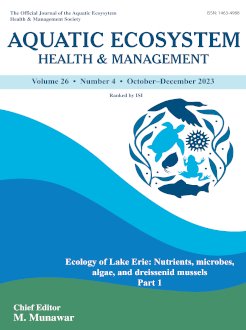We measured Quagga Mussel grazing-induced changes in seston concentration in 20-L laboratory mesocosms containing lake water, during May-October, as part of a study to investigate the present role of mussel feeding and nutrient excretion in affecting phytoplankton composition. A variety of measuring methodologies including size-fractionated chlorophyll (< 2, 2-20, and >20 µm), phytoplankton groups by FluoroProbe, cyanobacterial genera by 16S rRNA gene sequencing, and particulate C, N, and P gave us different insights into seasonal phytoplankton dynamics and mussel selective feeding and assimilation. High clearance rates and/or high assimilation rates were seen during late May-early July across all size categories, with high rates seen particularly in cryptophytes and diatoms as revealed by FluoroProbe. Starting in late July cyanophytes dominated the phytoplankton and feeding rate on them was generally zero or low. Sequencing analyses suggested that there was a diverse cyanobacterial community present, with Microcystis, contrary to expectation, dominating only in late June. Cyanobium was the dominant genera at most times during summer-fall, and as expected, Microcystis was rejected by mussels relative to other cyanobacteria. Planktothrix, dominant in spring, was readily ingested as well as Anabaena in late June. We show that a combination of methods is helpful to make progress in understanding plankton succession and grazing. These methods were important adjuncts to microscopic analysis (Carrick et al, this issue). Our results support the hypothesis that dreissenid mussels, when abundant, can affect seasonal succession of phytoplankton shifting composition to cyanobacteria and even changes within the cyanobacterial community; however, impacts are likely modest now due low mussel biomass (Carter et al., this issue). Assimilation of C, N, and P was generally high, which is important for mussel population maintenance.
How to translate text using browser tools
29 May 2024
Seasonal interactions between Quagga Mussel grazing and phytoplankton in western Lake Erie: The view from different measuring technologies
Vanderploeg H.A.,
Glyshaw P.W.,
Carrick H.J.,
Carter G.S.,
Dahal N.,
Denef V.J.,
Fanslow D.L.,
Godwin C.M.
ACCESS THE FULL ARTICLE
Dreissena
harmful cyanobacteria
selective feeding





